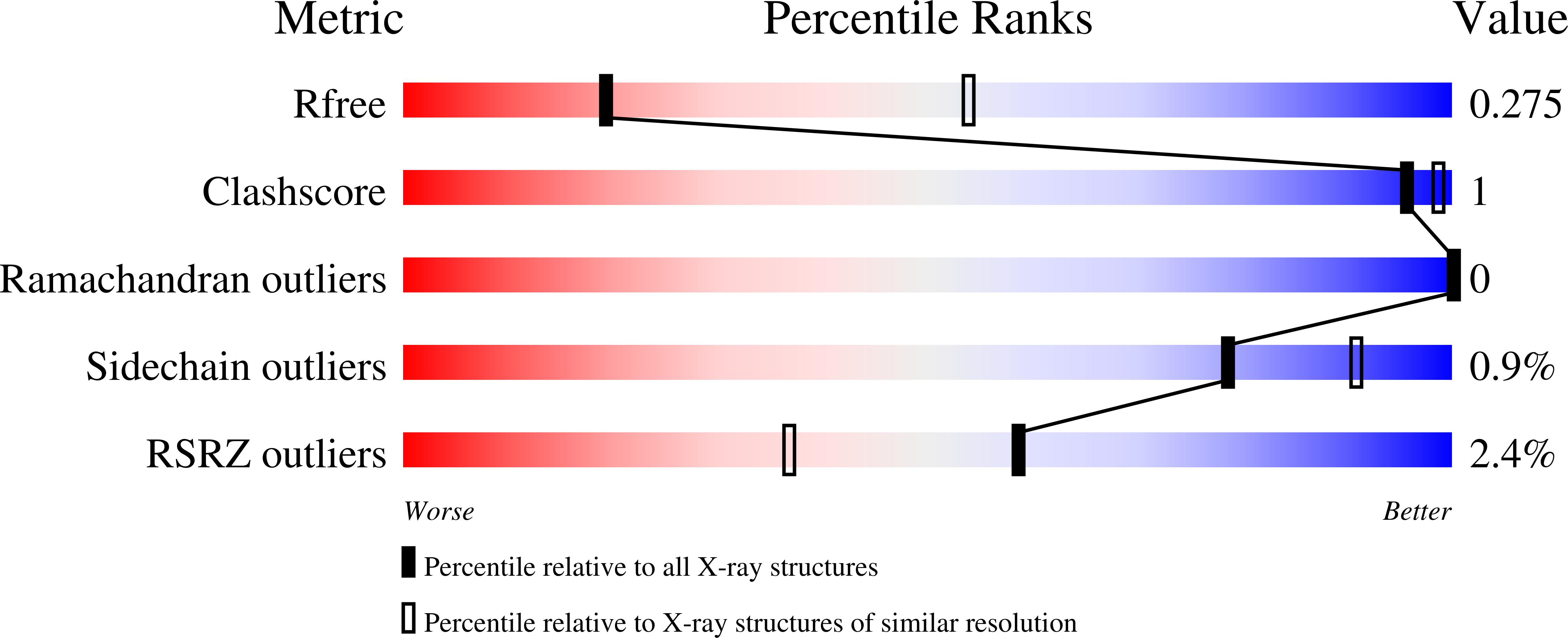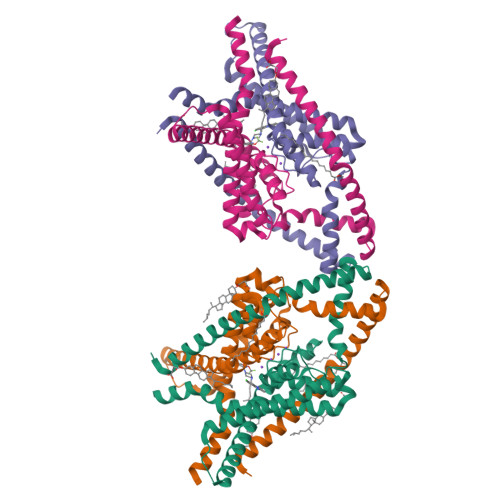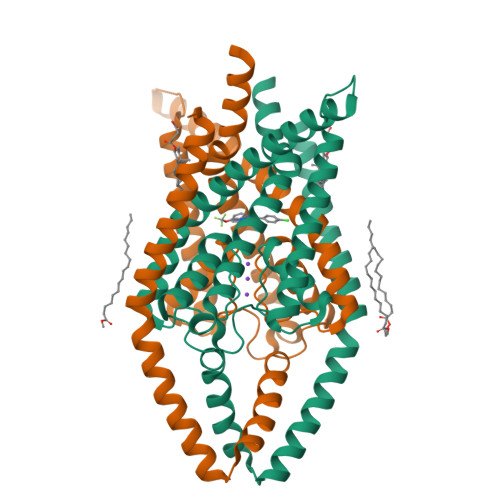A lower X-gate in TASK channels traps inhibitors within the vestibule.
Rodstrom, K.E.J., Kiper, A.K., Zhang, W., Rinne, S., Pike, A.C.W., Goldstein, M., Conrad, L.J., Delbeck, M., Hahn, M.G., Meier, H., Platzk, M., Quigley, A., Speedman, D., Shrestha, L., Mukhopadhyay, S.M.M., Burgess-Brown, N.A., Tucker, S.J., Muller, T., Decher, N., Carpenter, E.P.(2020) Nature 582: 443-447
- PubMed: 32499642
- DOI: https://doi.org/10.1038/s41586-020-2250-8
- Primary Citation of Related Structures:
6RV2, 6RV3, 6RV4 - PubMed Abstract:
TWIK-related acid-sensitive potassium (TASK) channels-members of the two pore domain potassium (K 2P ) channel family-are found in neurons 1 , cardiomyocytes 2-4 and vascular smooth muscle cells 5 , where they are involved in the regulation of heart rate 6 , pulmonary artery tone 5,7 , sleep/wake cycles 8 and responses to volatile anaesthetics 8-11 . K 2P channels regulate the resting membrane potential, providing background K + currents controlled by numerous physiological stimuli 12-15 . Unlike other K 2P channels, TASK channels are able to bind inhibitors with high affinity, exceptional selectivity and very slow compound washout rates. As such, these channels are attractive drug targets, and TASK-1 inhibitors are currently in clinical trials for obstructive sleep apnoea and atrial fibrillation 16 . In general, potassium channels have an intramembrane vestibule with a selectivity filter situated above and a gate with four parallel helices located below; however, the K 2P channels studied so far all lack a lower gate. Here we present the X-ray crystal structure of TASK-1, and show that it contains a lower gate-which we designate as an 'X-gate'-created by interaction of the two crossed C-terminal M4 transmembrane helices at the vestibule entrance. This structure is formed by six residues ( 243 VLRFMT 248 ) that are essential for responses to volatile anaesthetics 10 , neurotransmitters 13 and G-protein-coupled receptors 13 . Mutations within the X-gate and the surrounding regions markedly affect both the channel-open probability and the activation of the channel by anaesthetics. Structures of TASK-1 bound to two high-affinity inhibitors show that both compounds bind below the selectivity filter and are trapped in the vestibule by the X-gate, which explains their exceptionally low washout rates. The presence of the X-gate in TASK channels explains many aspects of their physiological and pharmacological behaviour, which will be beneficial for the future development and optimization of TASK modulators for the treatment of heart, lung and sleep disorders.
Organizational Affiliation:
Structural Genomics Consortium, University of Oxford, Oxford, UK.





















